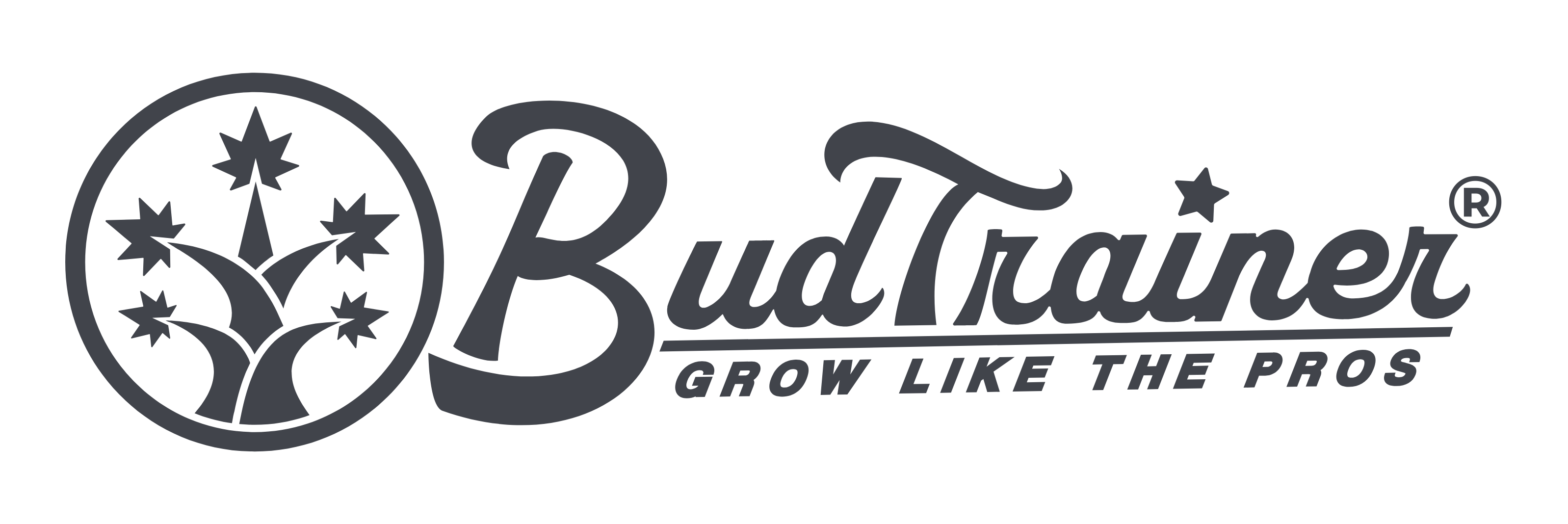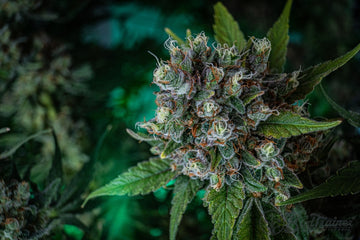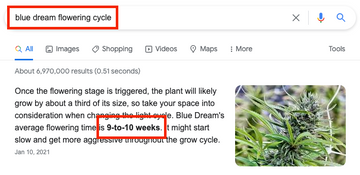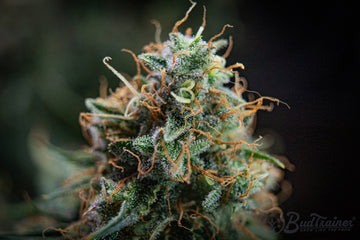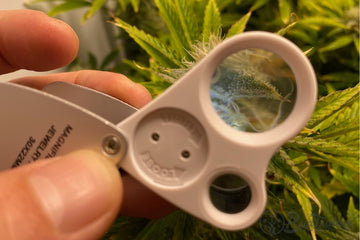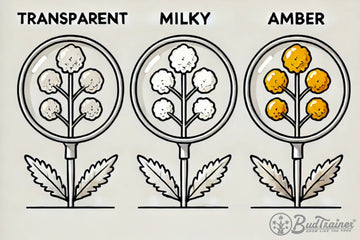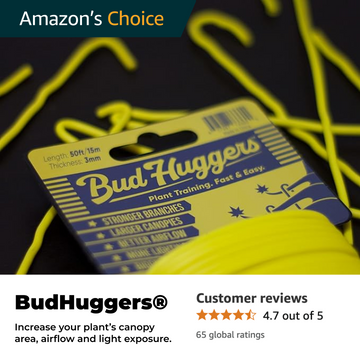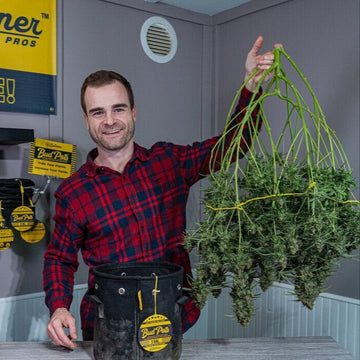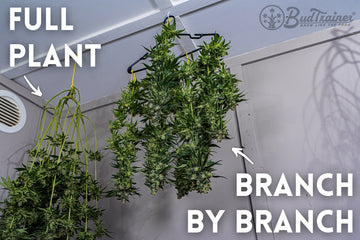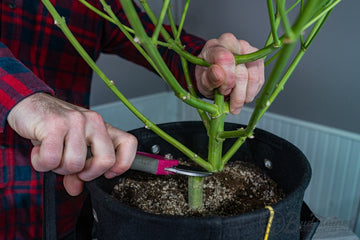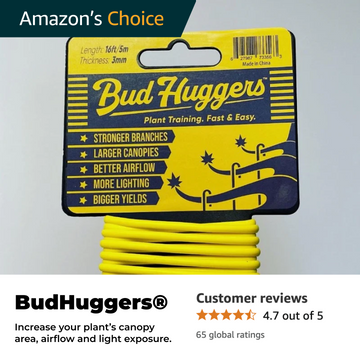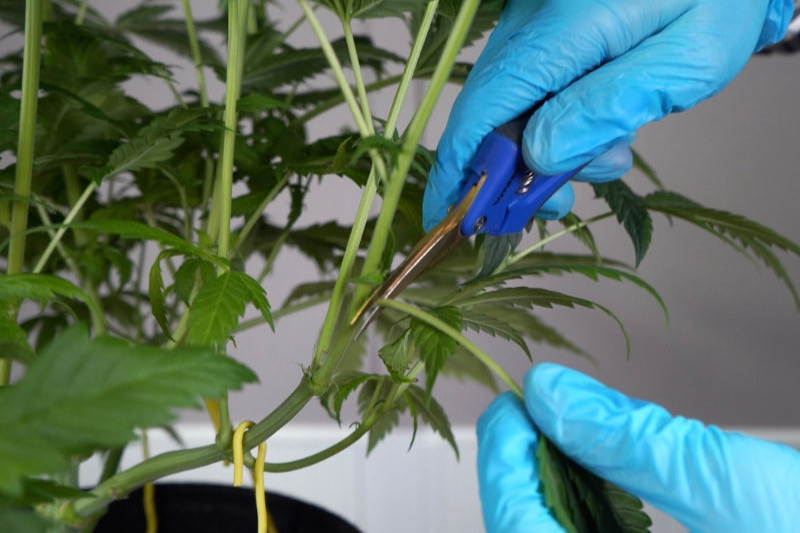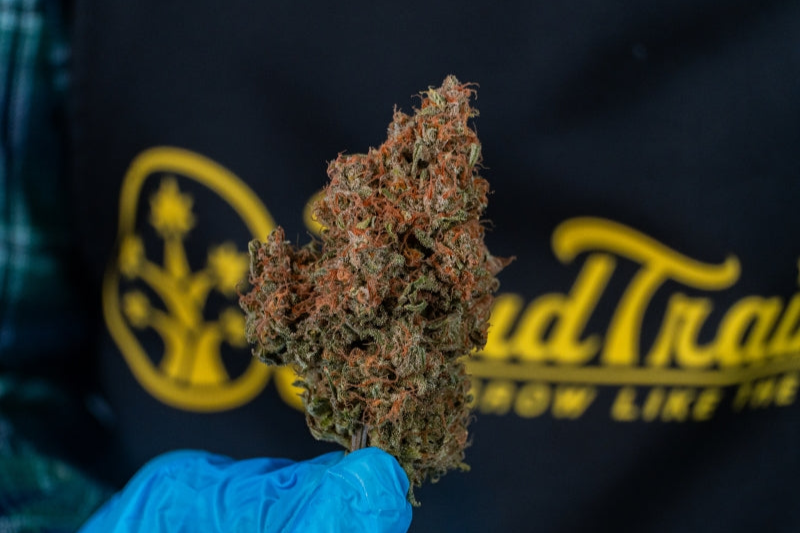The BudTrainer Method™ Lesson #6
When & How to Harvest & Dry Hemp
(works with AUTOFLOWERS)
Written by cannabis production expert Henrique Dias - Updated on Sep 20, 2024
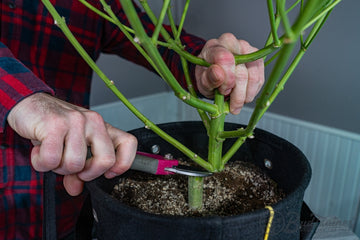
DISCLAIMER:Everything taught and sold by BudTrainer® is to be used strictly for legal purposes. We do not endorse the production of illegal substances and it is your duty to ensure that you are complying with the law. The words "hemp", "cannabis", "weed", and "marijuana" are used interchangeably to refer to the same plant (legal hemp with less than 0.3% THC) for the purposes of this lesson.
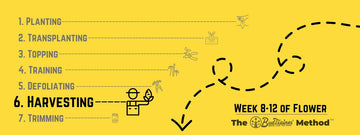
The Key To A Perfect Harvest: Timing & Technique
When it comes to cannabis cultivation, harvesting is the most critical moment - it’s where all your hard work finally pays off - or not. Harvesting too early or too late can ruin months of effort, but by timing your harvest correctly and following the proper drying techniques, you’ll ensure your buds are potent, flavorful, and ready to impress. Let’s dive into the essentials you need to know to make the most of your harvest.
Tools & Materials
- Disposable gloves
- Garden wire/ties
- Jeweler’s loupe
- Clothes hangers
- Trimming scissors
- Pruning scissors
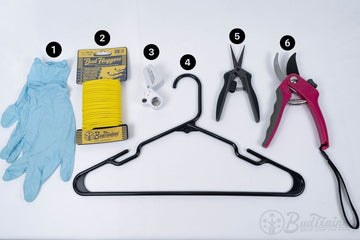
Different Trichome Maturing Times
Your cannabis plant will never mature its flowers at the exact same time. Some plants mature the tops first while others mature the bottoms, meaning some parts will be ripe, some “green”, and others overripe. What is important is to decide when to harvest based on the trichome color of your best flowers and not your smallest flowers.
If the smaller buds aren’t ready but the big ones are, it is better to harvest now or the big buds may become overripe with CBN. Conversely, if the smaller buds are ready but the bigger flowers are still underripe, it is better to wait and let the smaller buds go over instead of compromising the good flowers.
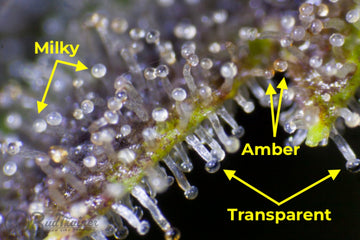
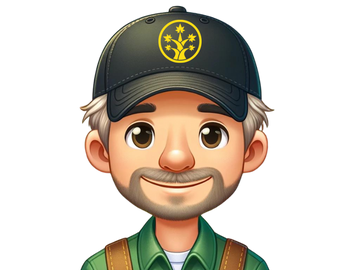
BudTip: How To Harvest Like A Pro
If your plant has reached the stage where it’s ready to be harvested, there are 2 main ways in which you can do it: whole plants or branch-by-branch. But before harvesting, it is recommended performing a Pre-Harvest Defoliation, which you can learn how to in Lesson #5: How to Defoliate Cannabis. This will help you remove unwanted leaves right away, reducing the risk of mold and making it much less time-consuming to trim later on.
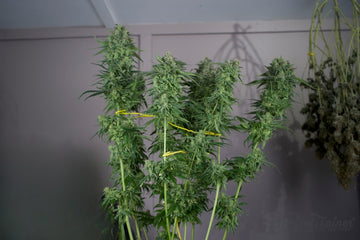
Harvesting Method #2: Branch-by-Branch
The advantage of harvesting your plant branch-by-branch is that you can dry it in smaller spaces, either hanging or simply by having your branches lay flat on a drying tray or rack. The downsides to this method is that it is more labor intensive to hang the plant one by one, and it can reduce the amount of terpenes after drying.
There are a few scenarios where harvesting branch by branch is recommended: when training with a trellis net that can’t be removed, when the marijuana plant is too large and/or wide and it becomes impractical to hang it whole, or when your relative humidity is higher than 60%.
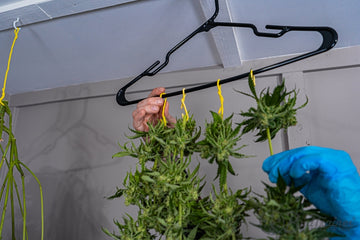
You Are Off To A Great Finish
Now that you harvested your plant, whether branch-by-branch or whole, you are set for the final stages of the growing process. Patience at this last stage is key, as the drying process that is about to start cannot be cut short or sped up. Here are some best-practices on how to dry your cannabis for maximum potency.
Drying Method #2: Branch-by-Branch
Different than hanging a whole plant, drying your marijuana plants branch-by-branch requires you to… well, hang each branch. In order to do this you can use garden ties like the BudHuggers® to attach to each branch and hang them on a clothesline or a clothes hanger. Make sure the branches are not touching one another and that there is enough space between them.
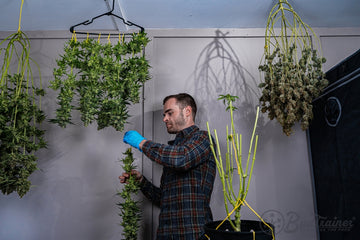
Ideal Drying Environment
The drying process starts the moment you cut your plant down, and lasts for 7 to 10 days. During this period it is important to maintain your plants in a dark space at no more than 20C/68F, at a relative humidity (RH) of 55% or lower, and with light airflow through the plants in order to avoid white mold. Drying should be done in close to 7 days at 55% RH.
If your humidity is higher than 60%, either add a dehumidifier set at 55%, or add a fan pointed at your plants in order to create airflower. Drying should be done in close to 10 days at more than 60% RH.
If your humidity is lower than 45%, do not use any fans. Drying should be done in less than 5 days at less than 45% RH.
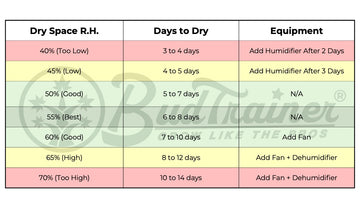
When Is Drying Finished?
After your plants are hanging, leave them untouched for at least 5 days, at which point you can start testing your stems to see if they are ready for dry-trimming. To test them, pick a thin branch and try to snap it in half. If it makes a crackle sound, this means your plant is ready for dry-trimming and curing. If they only bend without snapping, this means your plant can still use some more drying.
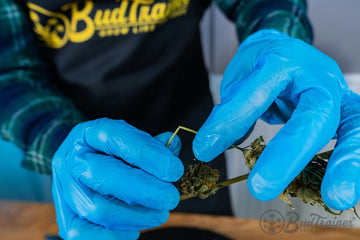
When you hear a "crack" sound, it’s time to dry-trim and cure. After your stems are "cracking" to the bend, this means your plant is dry enough to be dry-trimmed and cured, which are the topics of our The BudTrainer Method’s last lesson, Lesson #7: How to Trim & Cure Cannabis.
Your Buds Are Almost Set For Perfection
Now that you dried your plant, whether branch-by-branch or whole, all it needs is to be trimmed and cured in order to bring back the moisture from the inside to the outside, getting ready for consumption. While tedious, trimming is where you get to decide the final look of your buds, and curing is where their true quality comes through.
Learn to Grow Big Buds
And be the first to hear about new articles, product releases, and special events.
About The Author
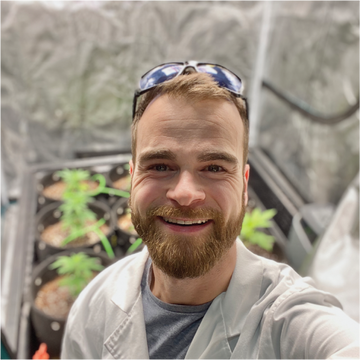
Henrique, the CEO of BudTrainer®, is a mechanical engineer with a commercial cannabis production post-grad, and is also a former commercial cannabis consultant.
H takes plant science principles and breaks them down into simple steps for home growers to achieve the same results as the pros and grow the highest-quality cannabis.
